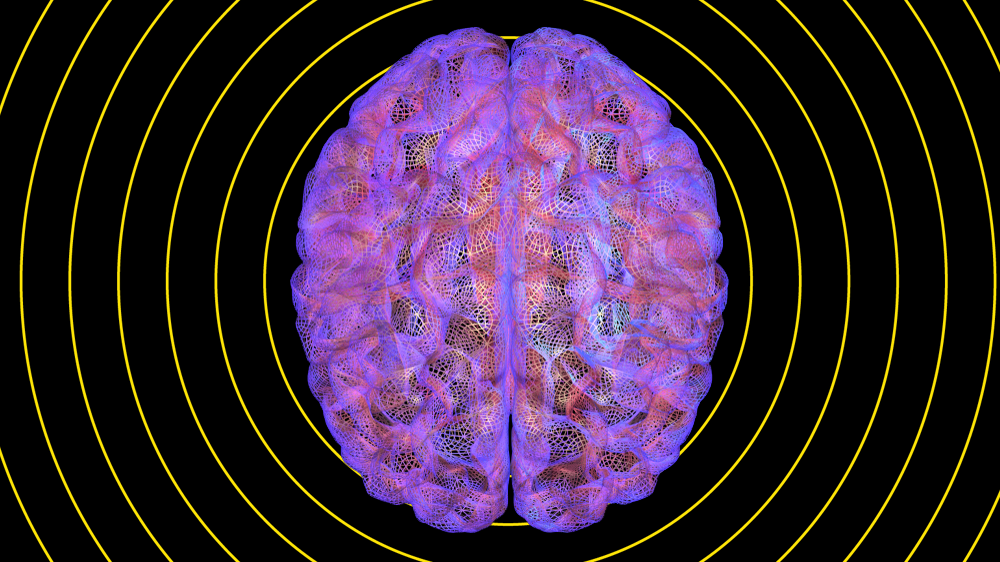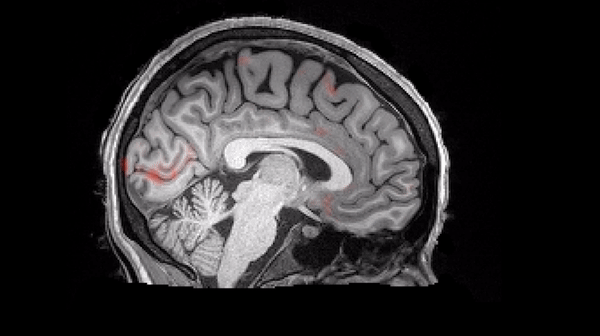Your brain age and chronological age often differ. So, how old is your brain?

- In his 2022 book The Age-Proof Brain, Dr. Marc Milstein explores the science behind how the brain ages, and the mental declines that many people suffer as they enter old age.
- Although genes influence how our brains age and the likelihood that we’ll develop certain neurological disorders, lifestyle plays a significant role in brain health, too.
- This excerpt of The Age-Proof Brain overviews how the buildup of “brain trash” and toxins can cause the brain to age faster than it otherwise would.
We know that our brains are often not the same age as our chronological age. For instance, there is a group of people called SuperAgers, who are in their eighties and beyond but have the cognitive function of those decades younger. Conversely, it’s possible for your brain to be older than your chronological age. Obviously, that’s not something you want!
While there’s no test you can take at home to definitively say how “old” or “young” your brain is,* we can think of a young and healthy brain as being at peak function. And, most often, peak brain function is associated with a sharp memory. As we get older, it can be difficult to remember names, faces, events, something we just read, or what we ate. In younger brains, the process called neural differentiation is efficient and robust. In this process, specific brain cells are tasked to remember certain types of information, such as faces. As we age, that process deteriorates, so the cells lose their specificity and do not function as well. Instead of just focusing on faces, they try to remember other types of information as well. For a SuperAger, neural differentiation is akin to that of a twenty-five-year-old. That’s part of the reason why a SuperAger has the memory performance of a twenty-five-year-old.
So what else are the secrets of these SuperAgers with robust memory— and all those with brain ages younger than their chronological age? A study published in 2021 uncovered some surprising answers. Over eighteen months, the study followed 330 people, referred to as SuperAgers, who were 100 years or older; the researchers found no decline in most areas of memory or cognitive abilities. (While a year and a half might not sound like a long time, once a person reaches the century mark, two years for them is like twenty-five years for a seventy-five-year-old in terms of brain health. For example, the risk for developing dementia increases by 60 percent every two years after the age of 100, while it takes twenty-five years for a 75-year-old’s risk of dementia to increase by the same amount. In other words, twenty-five years of risk is compressed into two years after the age of 100.)
So, what is the secret of these mentally strong centenarians? You might be tempted to guess “genes.” While genes can definitely play a role, 16.8 percent of the people in the study had genes that are known to raise the risk of Alzheimer’s, and they did not develop the disease. What seemed to be a key piece of the puzzle was lifestyle!
One key factor was that they kept learning new things throughout their life. Remember, your memories are housed in those connections between your brain cells. Think of your brain like a bank account; the more deposits we make, the less our net worth is affected by withdrawals. We make deposits (new connections) by learning new things; as we age and naturally lose some of those connections, there are simply more remaining. There’s a Spanish saying: “Learn one new thing each day.” This simple advice is an excellent first rule for brain health. In chapter sixteen we discuss in depth which types of learning are best, but a key take-home message right now is that learning new information or a new skill keeps your brain young. So, if you are learning something new by reading this right now, you are doing one of the most important things for your brain.
While we are not at the point where every person can slide into a brain scanner and find out their brain age, here are just a couple of factors that can help give you a sense of your brain age. Ask yourself the following questions:
1. Executive functioning—How well can I manage my day?
2. Balance and coordination—How well can I move and maintain balance?
3. Ability to learn and recall—How well can I remember important information?
4. Movement—How fast can I walk?
5. Identity—How old do I feel?
Of course, none of these questions can replace an actual brain scan and comprehensive evaluation by a neurologist. Still, these fundamental categories can help us get a sense of brain age. It is important to note that simply determining someone’s brain age by brain scan is also not without complexity and controversy. For example, there is the issue of which part of the brain and which biomarkers, such as white or gray matter, iron deposits, and volume, to investigate or prioritize. Be wary of a private clinic offering to tell you your brain age, especially for a hefty fee, as at this point this tool is primarily being used accurately at large research institutions. For that matter, be wary if it’s an offer from a guy in a van for a bargain fee. In all seriousness, determining brain age using cutting-edge imaging technology has become an emerging and powerful tool in research studies at large institutions to understand health, disease, and mortality.
We will continue to discuss other key factors that provide insight into our brain age. Remember, it is not just one of these factors but a combination that determines brain age.
Brain Trash and Brain Age
Now that you know your brain can be older than your chronological age, you may be wondering how that happens. One of the things that makes a brain older, or age prematurely, is the buildup of trash and toxins (we discuss other factors in the coming chapters of this book). The trash is a by-product of the work your brain cells do. Remember, we said each of your brain cells is like a hustling, bustling Manhattan. Just like a city can get dirty, in the process of living your brain gets dirty as well—filled with waste in the form of leftover chemical reactions, environmental toxins, old, damaged cells, and no-longer-needed proteins. Your three-pound brain makes five pounds of trash a year. This trash is normally recycled or flushed out, but if those processes break down, the trash can build up and damage the brain. The trash buildup interferes with your brain cells’ ability to communicate with each other, eventually causing the cells to shrink and die. There are many forms of brain trash, but the two key types are amyloid plaques and tau tangles.
Plaques
To better understand where plaques come from, imagine a house with an antenna on the roof that delivers some basic television TV stations. If this antenna breaks, not only will you not be able to receive the TV stations but broken pieces from the antenna could damage your roof. The same idea can happen with your cells. The surfaces of your cells have receptors that look like antennae, which function as an extensive communication and security system. There are many different types of receptors that play a role in all the complex actions and emotions of life. For instance, some receptors specifically receive signals that tell the cells whether or not to grow. Receptors also attach to chemicals trying to enter the cell. If the receptor recognizes the chemical, it unlocks the cell so the chemical—which can impact functions ranging from mood to learning emotions such as love—can enter.
One type of receptor found on brain cells is called amyloid precursor protein, or APP. Sometimes enzymes, acting like scissors, come along and chop up APP into little pieces. There are several factors that cause these enzymes to chop up the APP, one of which—inflammation—we discuss in the next chapter. What’s important to know now is that the chopped pieces of this specific receptor APP happen to be sticky and clump together to form plaques that we call beta-amyloid.

Tangles
While plaques form between brain cells, tangles are trash that forms inside the cells. Inside your cells you have an extensive system of filaments and tiny tubes, called a cytoskeleton, which delivers proteins and nutrients to different parts of the cell. Think of this cytoskeleton as subway tracks, but a microscopic version. The cytoskeleton is held in place by a protein called tau—which in this analogy is much like the railroad ties that hold tracks in place. Sometimes, the tau molecules that hold this elaborate delivery system in place detach from the cytoskeleton and attach to other tau molecules. Imagine a bunch of railroad ties coming loose and forming a tangled mess; that’s what a “tangle” in the brain looks like.
It is not completely clear what exactly causes these tau molecules to no longer hold the tracks in place, but there is evidence that inflammation, buildup of toxic components, and chemical reactions in cells are all factors. Once tangles accumulate in one brain cell, they then leak out of the cell and get taken up by a neighboring healthy cell. This healthy cell gets tricked into making more tangles and thus the damaged cells spread throughout the brain. A 2021 study found that tracking the accumulation of tau protein in the brain is a better predictor of memory decline than tracking plaque formation.
Plaques and tangles are the two most common forms of brain trash found in Alzheimer’s disease (we discuss this more in chapter six), and tau tangles are also found in other forms of dementia, as well as chronic traumatic encephalopathy (CTE—a condition where brain damage occurs due to trauma from head injuries such as concussions). But there are also other types of brain trash that can be a root cause of a wide range of diseases and dysfunctions, including depression, Parkinson’s disease, and anxiety, to name just a few. For example, a protein called alpha-synuclein accumulates in toxic clumps that damage dopamine-producing brain cells. Dopamine helps coordinate movement. When these cells are destroyed, the tremors seen in Parkinson’s appear.
Buildup of waste in general can also lead to symptoms such as diminished focus, loss of productivity, and a drastic reduction in overall energy—signs and symptoms of biological aging. Simply put, the more trash, the “older” the brain.
So, can we get rid of trash? While there’s no brain shampoo, scientists have made a series of discoveries that show your body has powerful cleaning methods to literally take out the trash. Learning new things, which also increases the connections between your brain cells, is one of them! The next natural cleaning method is related to your immune system—which we turn to in the next chapter.





